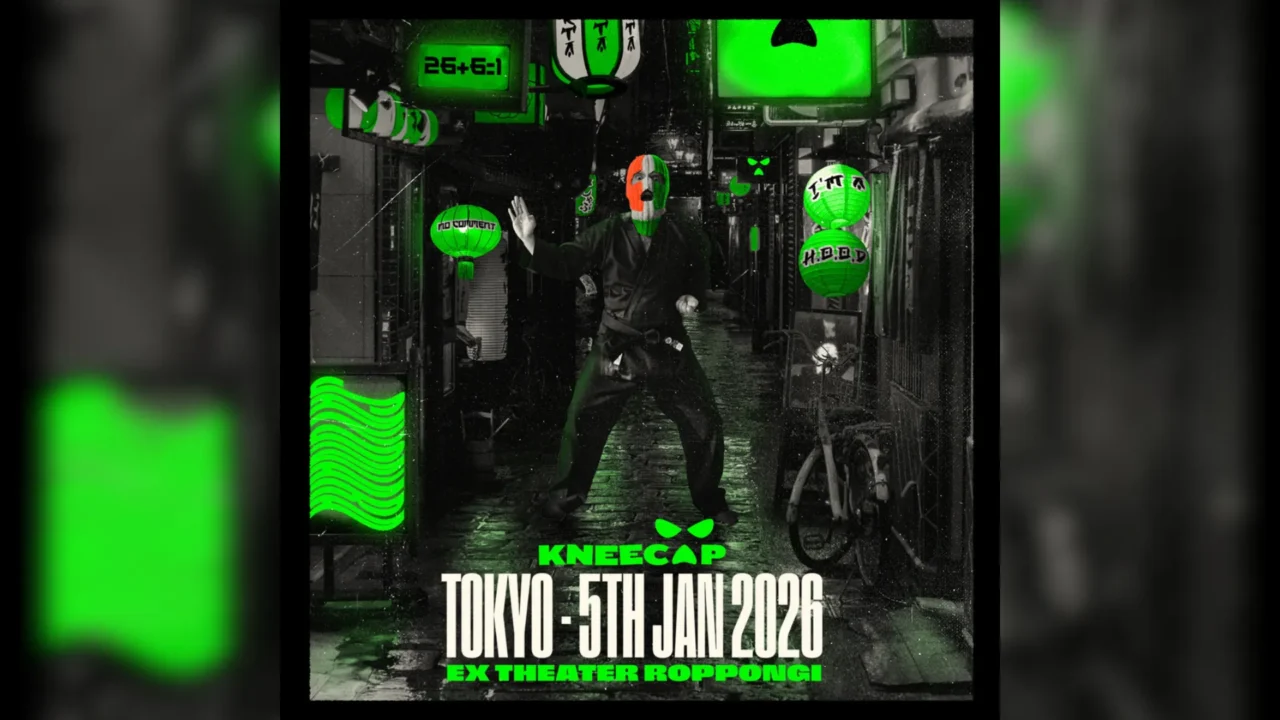Monday, April 14
Maybe all the travel and shows had caught up with me, because I didn’t wake up until after 10 am But honestly, it felt like that one night of sleep fixed everything—I woke up feeling totally reset.
The sunlight was pouring in, so I stepped outside. Morning in this town hits different. The light felt almost sacred, and it was already scorching. Just a T-shirt was too much—it had to be close to 86°F.
I wandered back into the big building where we’d had dinner the night before. It might have been some kind of old office. On the table: fresh-cut papaya, watermelon, and grapefruit. I started picking at them, still half-asleep, and was genuinely stunned by how sweet and vibrant everything tasted. Then Andrew showed up.
“Good stuff, right?”
“So good. Thank you. Hey, is this town actually yours?”
“Not really—I’m renting it too,” he said.
I couldn’t catch every detail after that, but I got the gist: the town’s called Pulga, and Andrew hasn’t been here forever—he’s leasing the place from a woman. The three long-haired guys we met last night? Turns out they’re also a touring band called Magick Portion. While Andrew’s here, he invites friends-of-friends, traveling musicians, or even stray backpackers to crash—no charge, just good vibes.
After stuffing myself with grapefruit, I went for a stroll. In the daylight, the place finally came into focus. It’s less of a town and more of a mountain-side campground. Little bungalows, hammocks, odd sculptures—there’s even a totem pole and something shaped like a boat.
There’s a “General Store” and a “Post Office” too, so maybe it really did function like a town once. Now, though, it feels like a dream someone left behind.
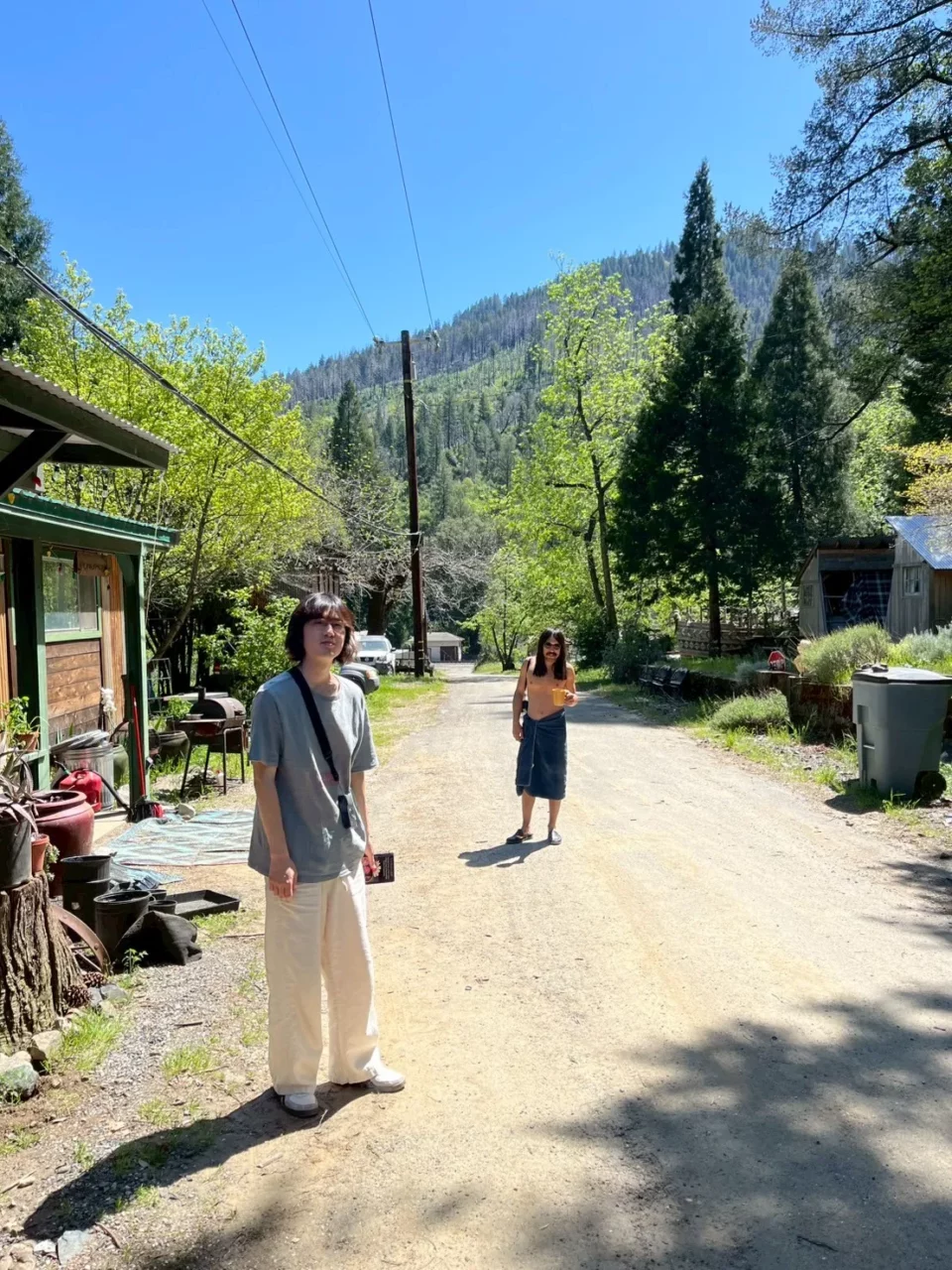
When I asked Andrew if there was any Wi-Fi, he said there was a signal in the room where he sleeps—so I borrowed some bandwidth and immediately started looking up the town.
Turns out, this place has a surprisingly rich and ever-shifting history.
Before the era of westward expansion, the land was home to the Konkow Maidu, a Native American tribe who lived in harmony with the surrounding nature. But in the 1800s, during the Gold Rush, American settlers took over in pursuit of profit. From there, two prominent families—the Grumps and the Kings—played a major role in developing the area.
By the early 1900s, the King family rose to dominance and established a town called “Big Bar” on the land where Pulga now stands. They created jobs, built infrastructure, and essentially ushered in the town’s golden age. The railroad line, it seems, was introduced during this time.
In 1916, the town was officially given the name Pulga. But that bright chapter didn’t last forever—by the latter half of the 20th century, the town fell into decline. In a twist that feels almost comically convenient, the King family decided to simply abandon and bury the place.
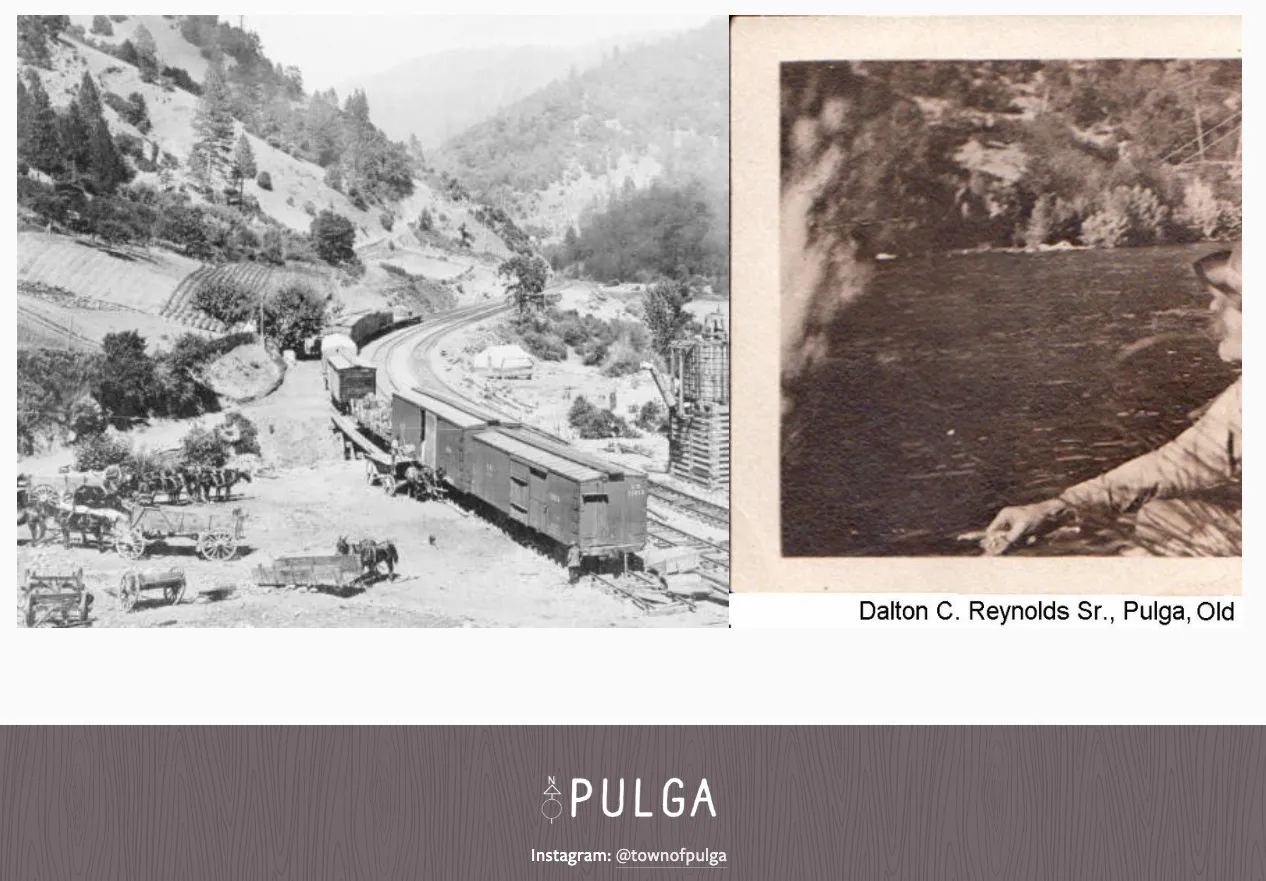
Pulga went through a pretty wild transformation. In the late ’60s, during the peak of the counterculture movement, this little town became something of a magnet. Hippies and beatniks—drawn by the peace, quiet, and wild natural beauty—started showing up and settling in, often without permission. Apparently, Janis Joplin and Grateful Dead even came through here.
When we arrived, I couldn’t help but notice how the place, for all its age, had this unmistakably hippie vibe—colorful cushions, painted signs, crystals tucked into corners. Now I get it. That strange, lived-in, spiritual feeling was all part of Pulga’s layered history. It honestly made me look at the place with new eyes. And knowing there’s a chance Jerry Garcia might’ve slept in the same bed I just woke up in? That’s the kind of detail that makes you sit up a little straighter.
Of course, like so many places tied to movements, Pulga faded when the counterculture wave broke. After the tragedy at Altamont in 1969, people say the dream kind of crumbled. Around then, the King family sold off the town to someone else. (Still hard to grasp the idea of selling off land that was taken in the first place…)
Then came the New Age folks in the ’90s—meditation retreats, hypnotherapy, all that. That didn’t last long either.
In 2015, a company stepped in and tried to run it as a nature hostel. They even had an Instagram. But by 2021, during the pandemic, the updates stopped. I guess they couldn’t keep it going.
So now Pulga just… sits. Quiet, slowly returning to the elements.
I found a hand-drawn map while walking around. Judging from the style and landmarks, it must’ve been drawn after 2015—maybe by someone trying to make sense of this strange, beautiful place. Just like I was.

On a neglected desk in the office, I found astrology books and works by Carlos Castaneda stacked up in a messy pile. Flipping through the pages of The Teachings of Don Juan (softcover edition), I was surprised to find it was a first edition from 1969. It definitely must have been brought here during the counterculture era. Otherwise, there’s no way it would have been left in such a careless heap.
(Carlos Castaneda was a Peruvian-born American anthropologist and author, best known for his work from the 1960s to the 1990s. His book The Teachings of Don Juan explores his experiences with a Native American sorcerer named Don Juan.)
There’s something fascinating about how these objects from so many different times coexist here. As I touched them, I couldn’t help but imagine the stories, the people, and the moments they’d seen. It felt like I was connecting to a piece of history in my own way.
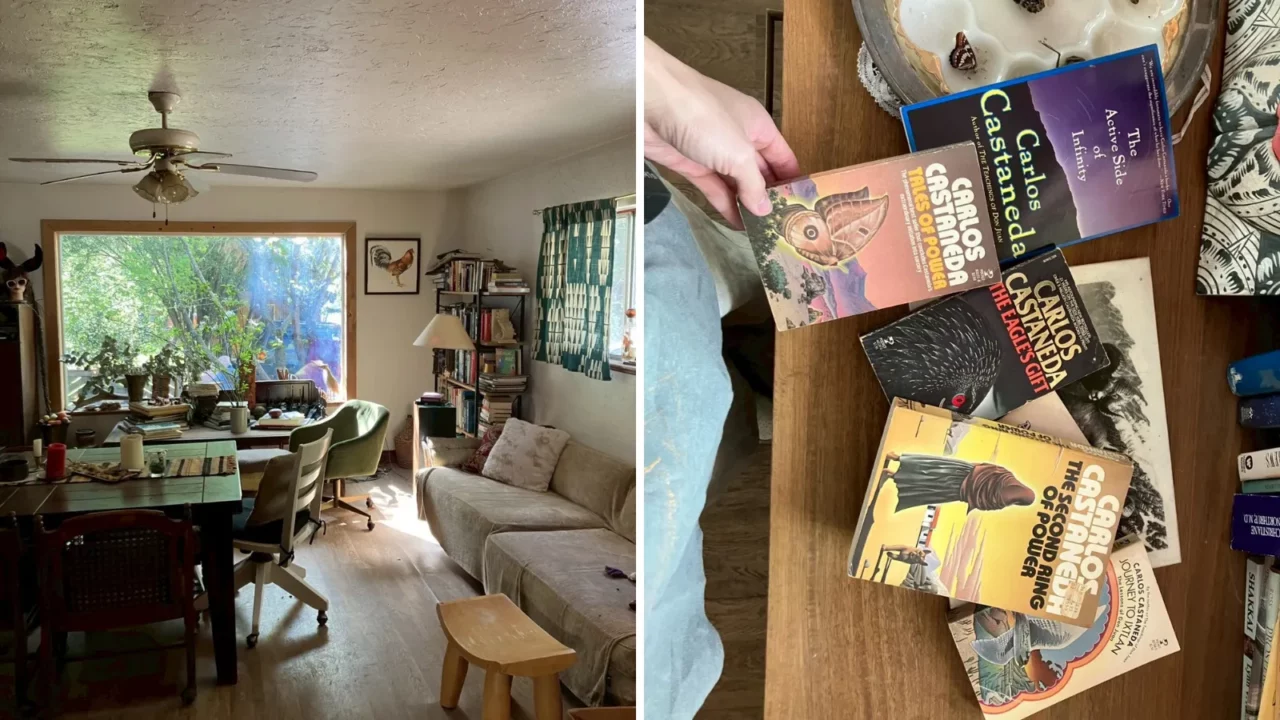
In Pulga, I ended up making a couple of non-human friends too: a dog and a cat. The dog’s name was Raffy, but the cat never had a name I could catch.
Both of them were incredibly friendly, always coming up to us and showing affection. It was clear that Andrew had raised them with a lot of care and love. As we wandered around the town, they moved freely, no rules or boundaries, and somehow, we found ourselves doing the same, just enjoying the moment with no restrictions.
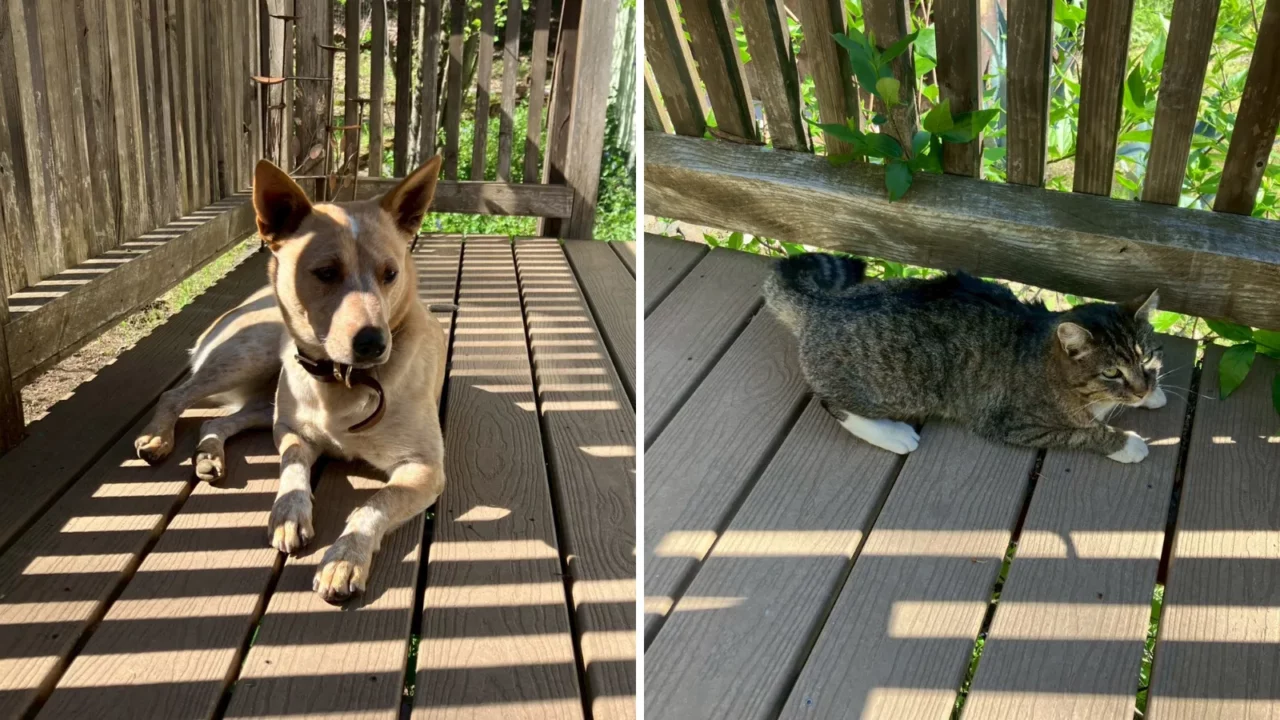
Tonight’s show is in Chico, but since it’s only about an hour away from Pulga, I’ve decided to take it easy here until after 3 PM. Not having access to my smartphone has strangely made time feel much slower, but in a good way.
I’m planning to settle by my favorite window and read. I can’t rely on a dictionary, but I’ll just try to imagine the meanings and see where it takes me. It’s actually kind of nice, just letting the words flow without worrying too much.
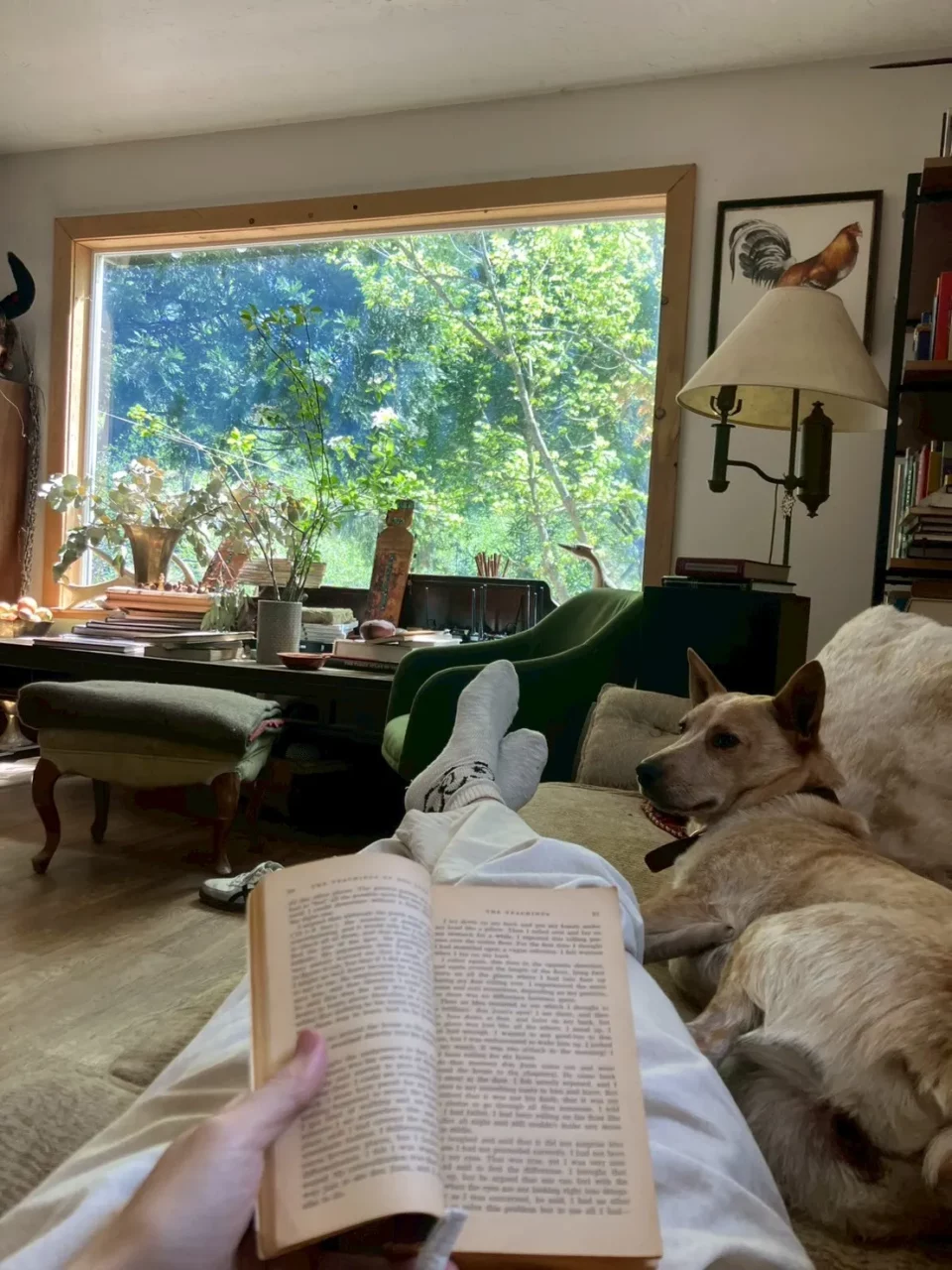
To be continued next time
Click here to see the article in the series.
maya ongaku US TOUR dates 2025
Apr 08 Seattle, WA, US|Neumos
Apr 09 Bellingham, WA, US|The Shakedown
Apr 10 Victoria, BC, Canada|Wicket Hall
Apr 11 Vancouver, BC, Canada|The Pearl
Apr 12 Portland, OR, US|Wonder Ballroom
Apr 14 Chico, CA, US|Argus Bar + Patio
Apr 15 Oakland, CA, US|The New Parish
Apr 17 San Luis Obispo, CA, US|SLO Brew Rock
Apr 18 Jacumba Hot Springs CA, US|Jacumba Hot Springs Hotel
Apr 19 Los Angeles (LA), CA, US|Teragram Ballroom
Apr 20 Flagstaff, AZ, US|Coconino Center for the Arts
Apr 22 Santa Fe, NM, US|Tumbleroot Brewery & Distillery
Apr 23 Oklahoma City, OK, US|Resonant Head
Apr 24 Austin, TX, US|APF 25: Kickoff Party
maya ongaku
maya ongaku is a three-piece band formed in 2021 by Tsutomu Sonoda, Ryota Takano, and Shoei Ikeda, hailing from a coastal village near Enoshima, Japan. Rooted in an organic, psychedelic sound that feels both grounded and untethered, their music draws from collective improvisation and the atmosphere of their local music scene.
The band’s name—maya ongaku—is a coined term, not taken from ancient history, but imagined as a landscape beyond the visible frame, hinting at the spiritual and the unseen. The group sees their beginning as a kind of spontaneous emergence—like life arising from non-life—something that simply happened, without pretense or planning.
In May 2023, they released their debut album ‘Approach to Anima’ via Guruguru Brain and Bayon Production, followed by a successful EU/UK tour in November and a domestic tour across Japan in December.
Their latest EP ‘Electronic Phantoms’ was released in August 2024. That same month, they hosted “rhythm echo noise” in collaboration with WWW, inviting Dutch artist Felbm to Tokyo. The band was also named Best Breakthrough Artists at the inaugural TOKYO ALTER MUSIC AWARD 2024, a new platform highlighting emerging voices from Tokyo’s independent scene.
maya ongaku has performed at major Japanese festivals such as Mori, Michi, Ichiba, FFKT, FUJI ROCK, Asagiri JAM, and FUJI & SUN. Internationally, they have appeared at festivals in Korea and China, steadily expanding their presence in Asia and beyond.
maya ongaku | linktr.ee/maya_ongaku
Instagram | https://www.instagram.com/maya_ongaku/?hl=ja
X | https://twitter.com/maya_ongaku




















